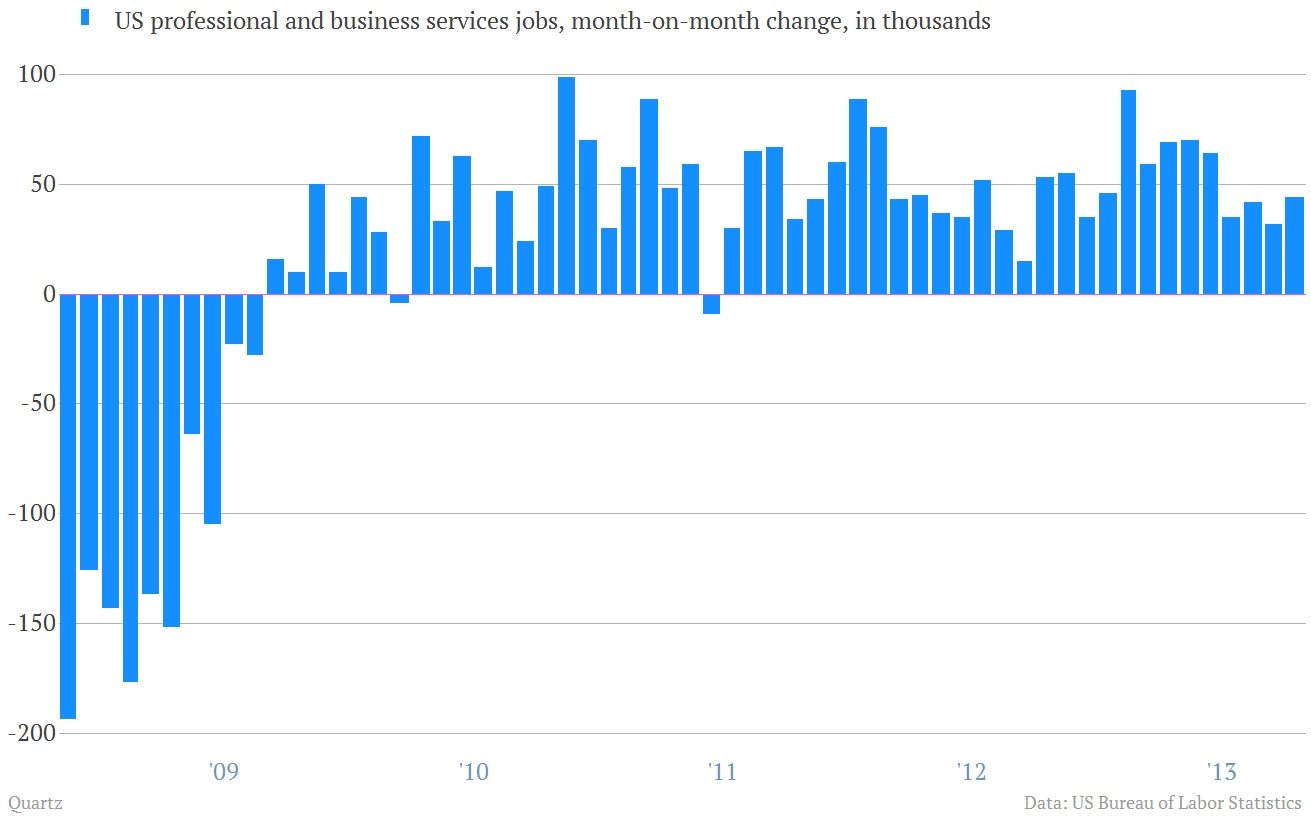Digging into the details of the giant US jobs report
Boom. Good US job numbers for October. Here are some of the details—troubling, heartening or somewhere in the middle.

Boom. Good US job numbers for October. Here are some of the details—troubling, heartening or somewhere in the middle.
On the eyebrow-raising side, there was a fairly massive shrinkage in the labor force. It fell by 720,000 people. That’s the second-largest drop over the last 10 years. The largest was in December 2009, during the worst of the crisis and recession. But these numbers come from the household survey, which “appeared to be badly distorted by the surveys being conducted late” as a result of the government shutdown, say Morgan Stanley economists.
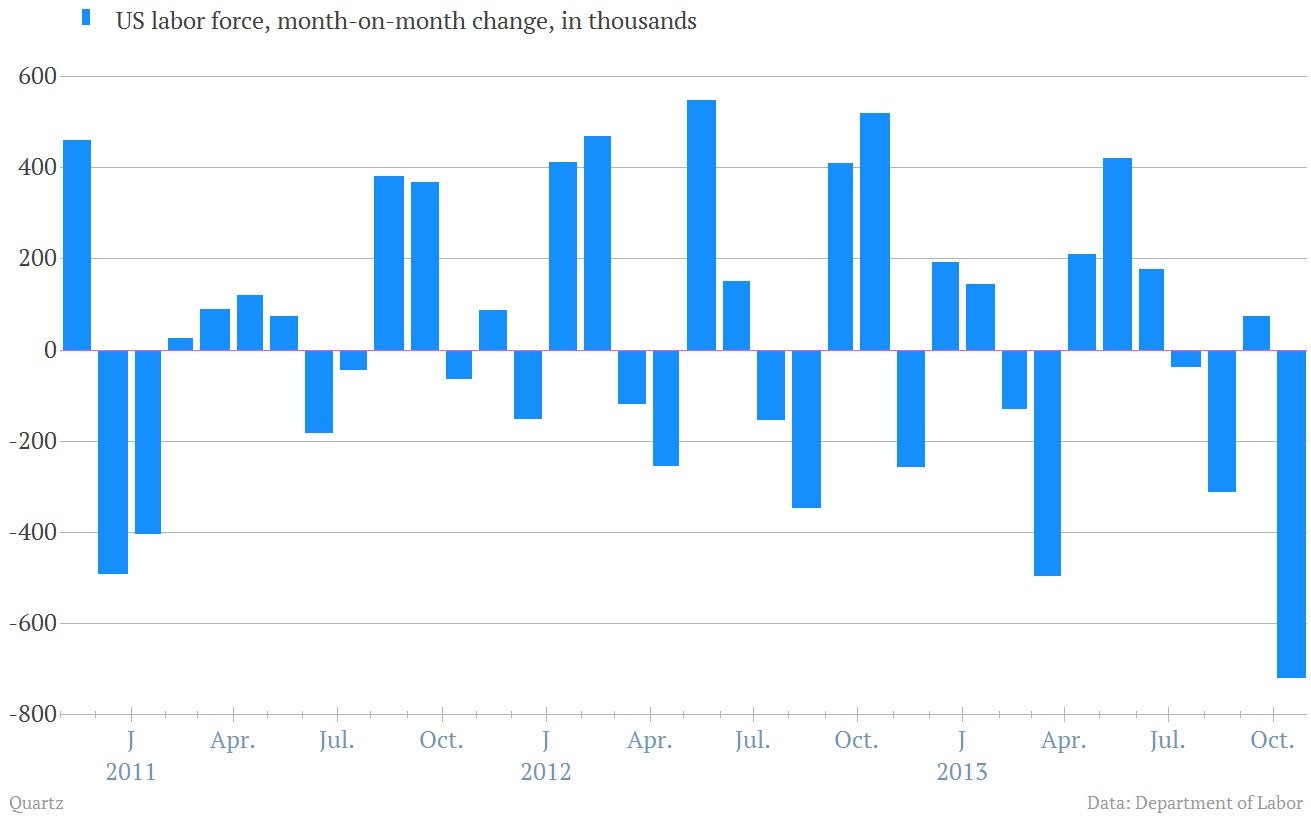
As a result, the participation rate fell to 62.8%. Again, much of this could be a distortion. But the trend toward lower participation has been clear for a while. October’s number was the first time it’s been that low since 1978, before women stormed the US labor markets en masse. The decline in the labor force reflects both demographic trends—aging baby boomers—and some element of cyclicality, like workers dropping out of the workforce because it’s so tough to get a job.
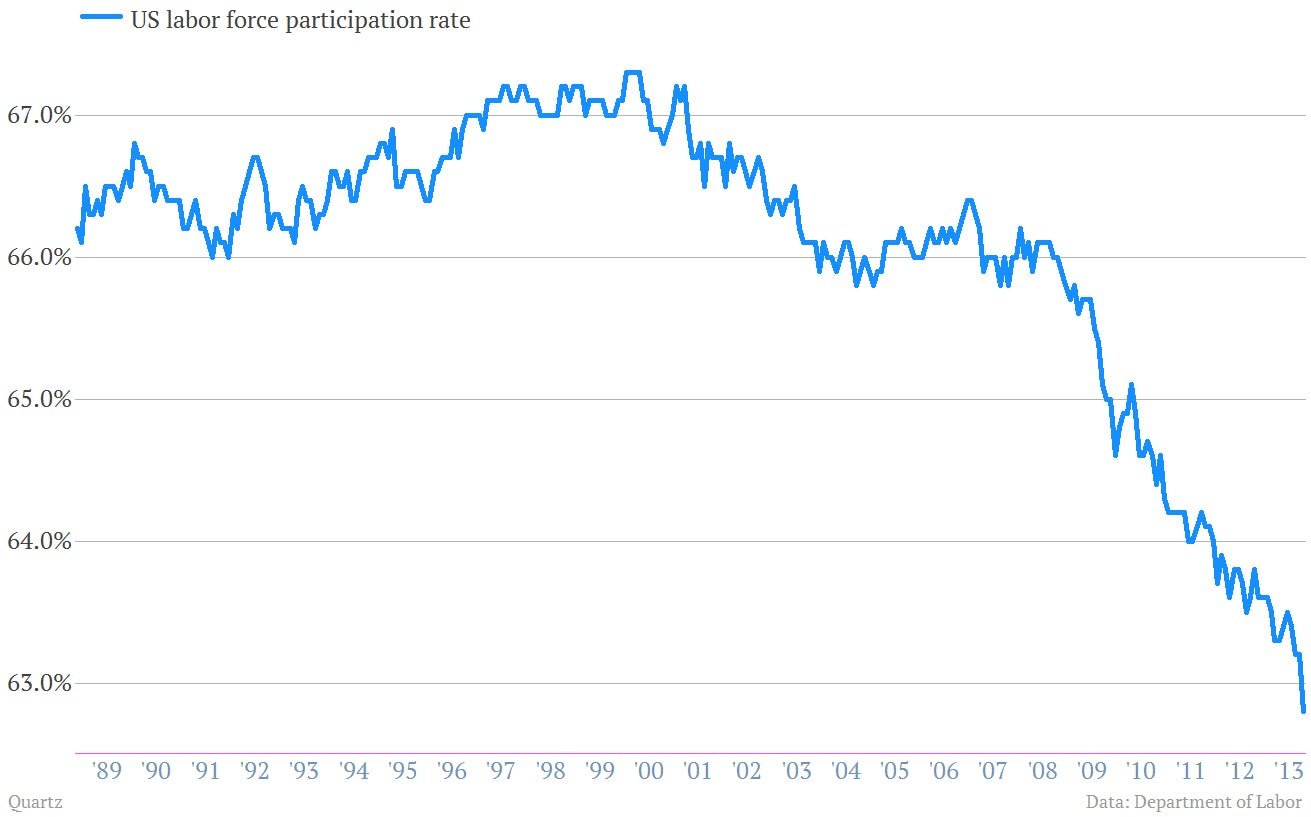
Federal employment continued to tumble, losing 12,000 jobs, which isn’t much of a surprise given the government shutdown. The trend on US federal employment over the last few years is pretty striking.
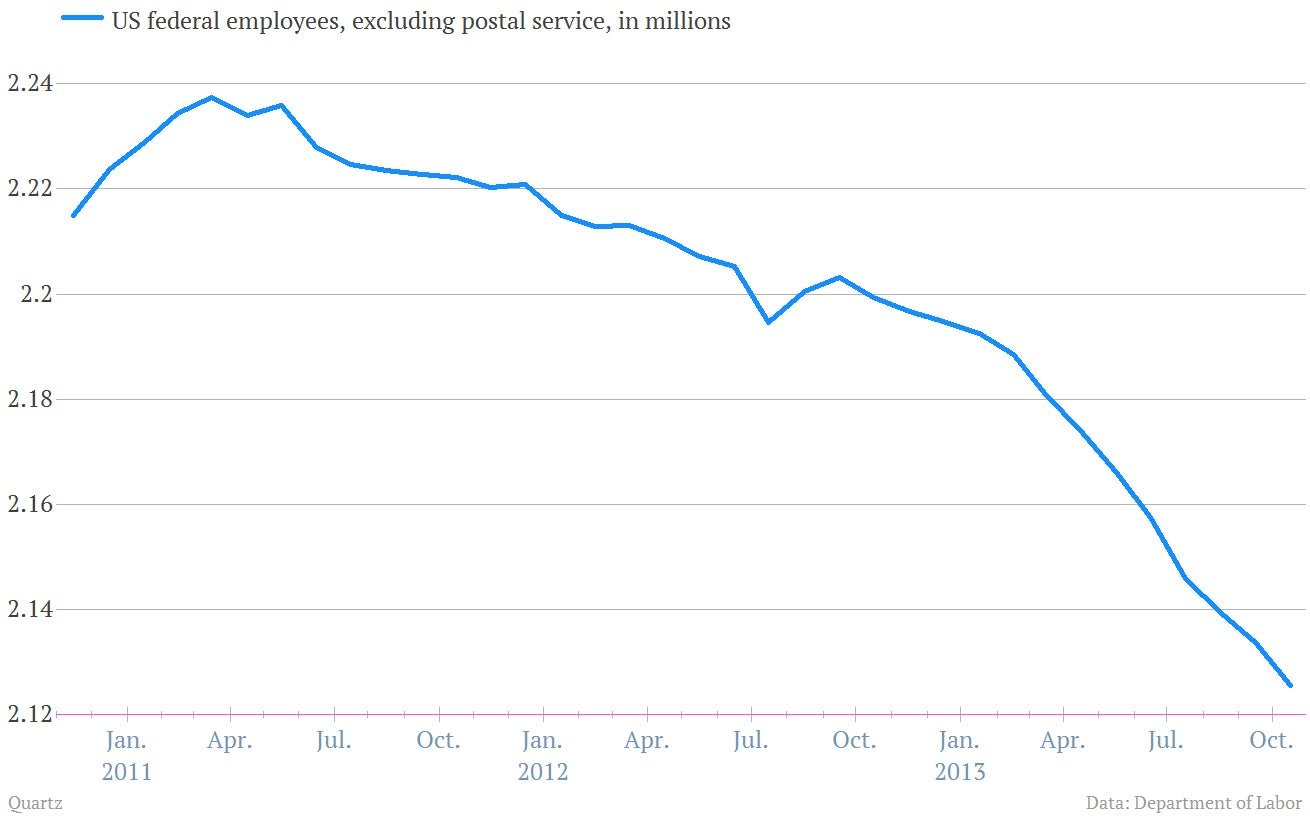
Growth in temporary workers, often viewed as a leading indicator hiring, tapered off a bit. Some 3,300 temps were added.
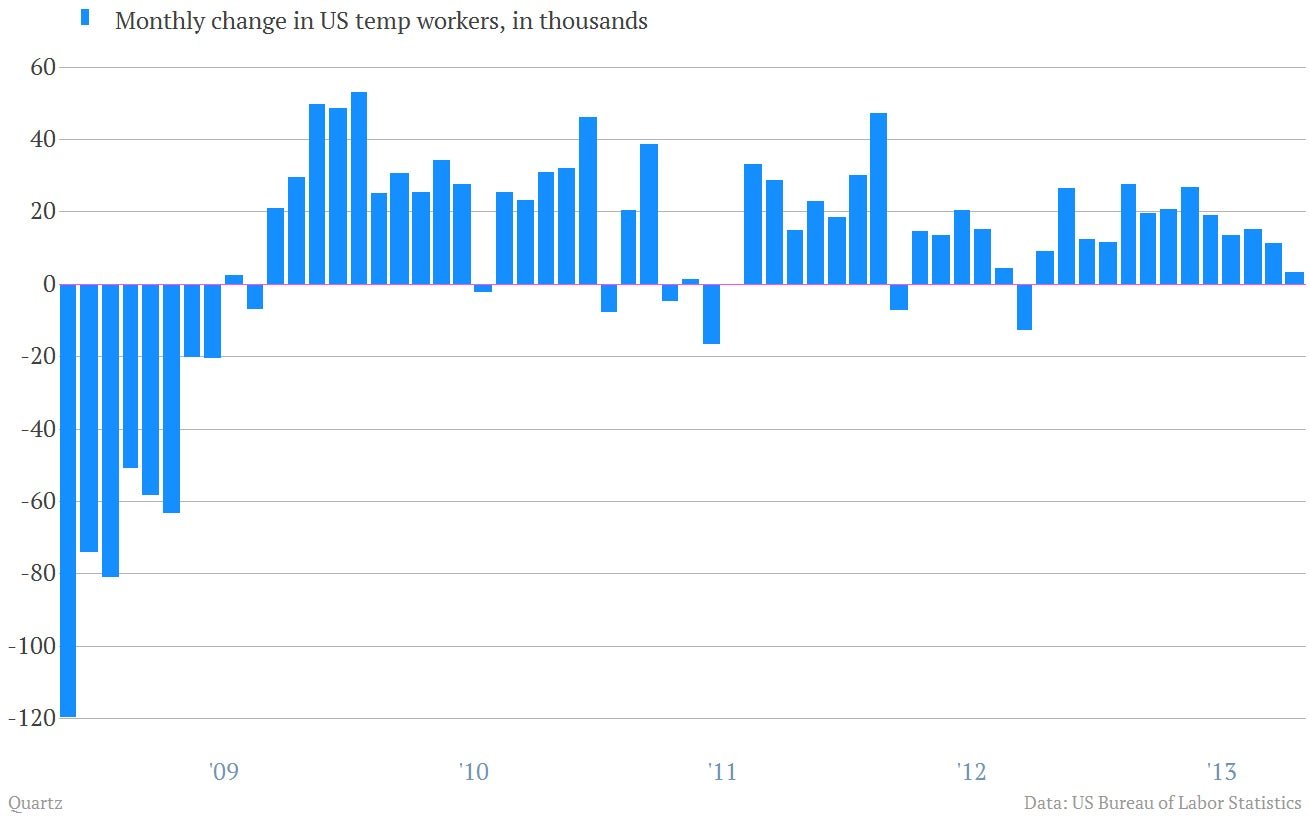
Construction added 11,000 jobs. Not too shabby.
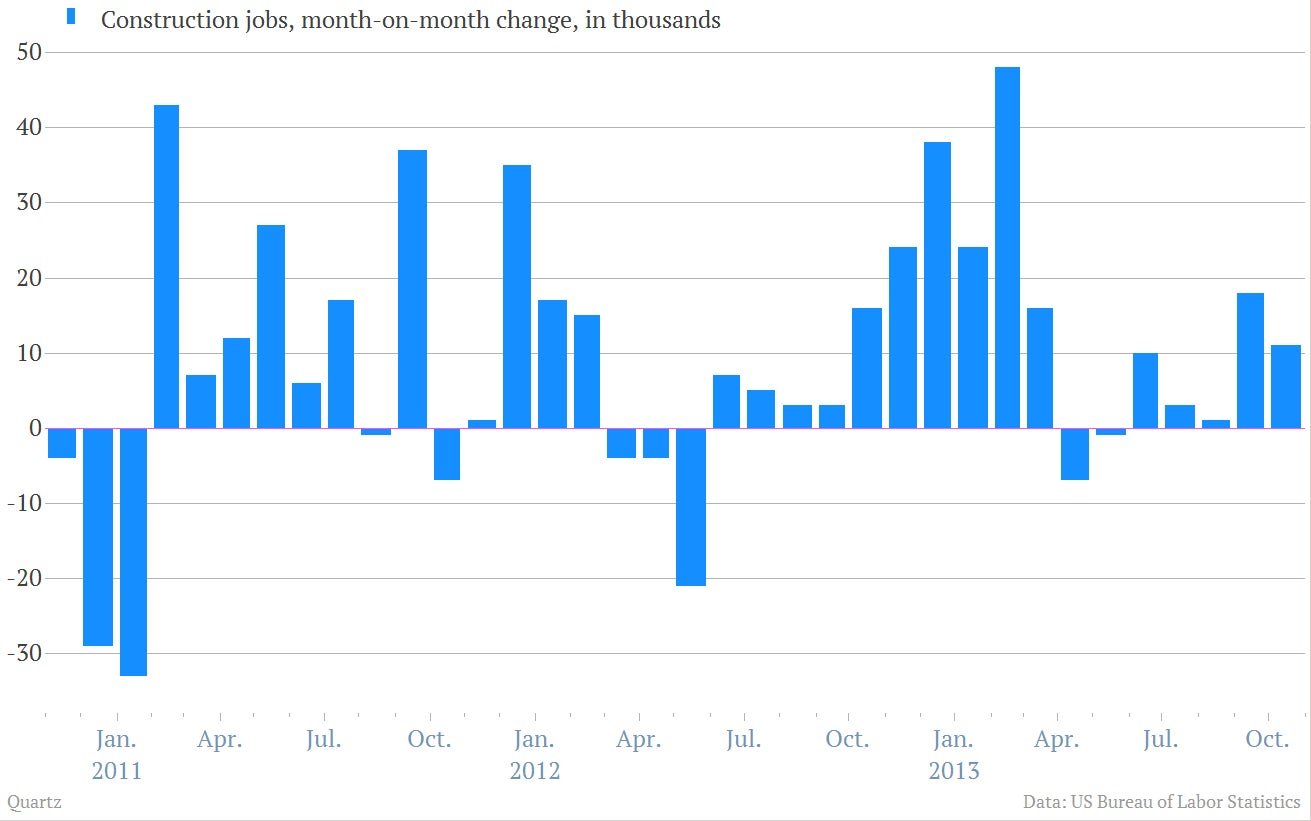
It was another good month for retail, with 44,000 new jobs. That bodes well for the holiday spending season, though some have cited the relatively robust recovery in lower-paid retail jobs as a worrisome trend.
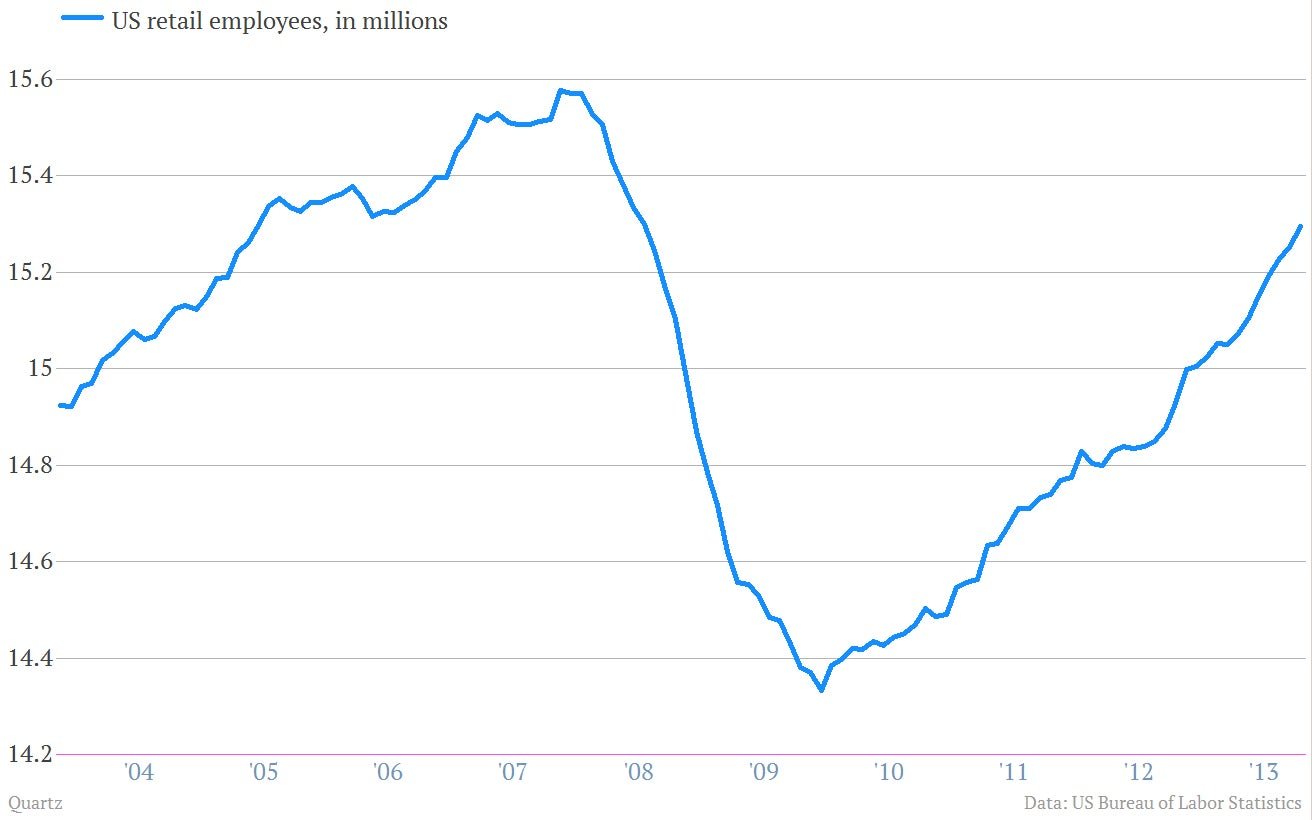
But better-paid business and professional services jobs also kicked in 44,000 new jobs in October. They’ve been growing at a nice clip lately.
